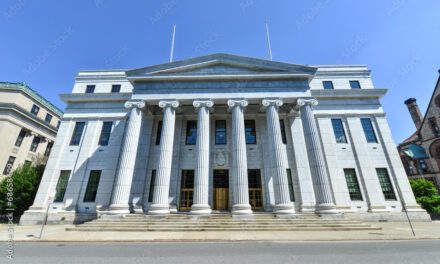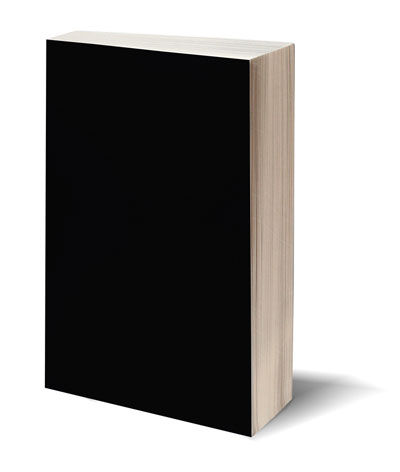AMBIGUITY IN INSURANCE POLICIES: EARTHQUAKES, POLLUTION, AND WASTEWATER–PLUS SOME ODDBALL SURPLUS LINES MATTERS
National American Insurance Co. v. New Dominion, 2021 OK 62, _ P.3d _ (2021).
This case concerns unusual exclusions in a series of modified Comprehensive General Liability insurance policies–some of them renewals–designed to serve productive business entities in the oil and gas industry in Oklahoma. The court’s opinion was not unanimous.
The Oklahoma Supreme Court decided the appeals on November 23, 2021. The insured was accused by several plaintiffs in several different lawsuits of causing the earth to quake (and thereby causing earthquakes*) resulting from its operations.
(*The term “earthquake” is not defined in the case (or–for that matter–in the policy), but the parties do not dispute that earthquakes are causative and/or caused events that were or were not covered.)
Three of the four policies involved appear to have been renewal policies. In any case, these lawsuits are called “the Earthquake Lawsuits.” There was an additional policy but it is largely irrelevant to the key issues in the case.
Property damages were the principal foundation of alleged liability. (One plaintiff alleged personal injury, but her injury was alleged to occur before any NAIC policy took effect and so was not an issue in the insurance dispute.)
It was New Dominion’s discharge of wastewater that was alleged to be the cause of property damage. NAIC brought a declaratory judgment action against its insured, and the insured counterclaimed.
As indicated this case involved separate policies over four different periods (2012-16). That matter shall not be considered here, except for one point. The main focuses of this post are ambiguity issues to be found in two different exclusions. The Court held that the exclusion entitled “Total Pollution Exclusions” (TPE) was ambiguous and so did not preclude coverage but that the “Subsidence and Earth Movement Exclusions” (SE) were not ambiguous and so precluded coverage.
[I have underlined the “s’s” in the court used names of the two exclusions at issue, because the court treats them as concatenations or groups of separate, though topically related, exclusions–rather like packages or bundles. There is certainly nothing wrong with pluralizing title language in this context. It looks like the insurer itself had done this. In my experience, this grammar is a little odd in insurance policies. Perhaps this semantics results from the fact that the policy is not a standard CGL policy but one specially designed–probably by of at the direction of the insurer–for a sector of the oil and gas industry. I shall say a little more about this at the end of the post. See the paragraph near the end of this post.]
Nothing will be said here about the issues of estoppel and reformation which were involved in the court’s opinion, after having been raised by the insurer, nor will anything be said about the involvement of the insurance agent. It is interesting that the agent told the insured that the insurer probably had a duty to defend and that it was unlikely that New Dominion would have liability if the insured defended the policy, since–as the agent put this assertion more-or-less–the stance of the insurance industry was to avoid setting any precedent that might encourage or support plaintiffs’ bring more cases against operators. (This unequivocal assertion is a little odd since many cases settle subject to confidentiality agreements.)
The TPE bars coverage for both bodily and property damage “‘which would not have occurred in whole or in part but for the actual, alleged or threatened discharge, dispersal, seepage, migration, release or escape of ‘pollutants’ at any time.’ Pollutants are defined within the policies as ‘any solid, liquid, gaseous or thermal irritant or contaminant, including smoke, vapor, soot, fumes, acids, alkalis, chemicals and waste.’ Waste refers to ‘materials to be recycled, reconditioned, or reclaimed.'”
[One may wonder why alleged and threatened discharges are included in the list of “un-covered” substances. After all, if an alleged discharge is pleaded without the actual discharge occurring, it cannot (or very, very likely will not) cause any sort of injury or damages, whether bodily or property. Probably, it seems to me, the language is included to avoid having the duty to defend cases where the excluded physical event does not occur but there is an allegation that it has.]
The Subsidence and Earth Movement Exclusions (SE), with one exception, reads this way: “‘This insurance does not apply to ‘property damage’, whether direct or indirect, any loss, injury, or damage arising out of, caused by, resulting from, contributed to, or aggravated by the subsistence, settling, expansion, sinking, slipping, falling away, tilting, caving in, shifting, eroding, mud[-]flow, rising, or any other movement of land or earth, whether or not any of the foregoing emanate or arise from or are related to the operations of the insured or any other person for whose acts the insured is legally liable.'” (Court-created emphasis removed.)
[Notice that the words “alleged” and “threatened” are not included. Notice also that all occurrences involving earth movement are excluded. If taken literally, this exclusion would include accidental dumping of material including earth, for example, placed on the front lawn of an arbitrary individual. Chances are, this court would find the exclusion ambiguous. It should be remembered that ambiguities which are irrelevant to a case before a court are ignored; this linguist rule is sensible, of course.]
(The exception to the uniformity of the renewal is the policy that contains the word “earthquake” immediately after the word “rising.” Without difficulty, the court observed (or found) that the presence or absence of the word “earthquake” in this sentence makes no difference to how the sentence fits with reality and so does not create ambiguity. [I guess that the court believes that an earthquake is an “‘other movement of land or earth.'” Now, this last one is a phrase that’s likely to be found ambiguous.)
The pollution exclusion, TPE is different, given its wording and given Oklahoma law on how to deal with ambiguities in contracts. The relevant analyses are two-step processes. First, a judge must find that the terminology is actually ambiguous, and contract language is ambiguous “if it is reasonably susceptible to more than one interpretation.” Simple disagreement as to meaning is not by itself ambiguity. Second, if the wording is found ambiguous by a judge, then it must be found that “the insured could have reasonably expected coverage under its terms. Ambiguous clauses will not be permitted to defeat coverage that was reasonably expected by the insured. Ambiguities are construed against the insurer and in favor of the insured.”
[Interesting, different jurisdictions have different criteria for ambiguity. In Texas, for example, Step One in the process is the same as that in Oklahoma. The second step is quite different. The ambiguous term or phrase will be interpreted in favor of the insured if it is a reasonable interpretation, even if the interpretation proposed by the insured is more reasonable. There is no reference in the Texas rule as to what the insured reasonably expects. My theory is that Texas is avoiding the fact question as to what was in the insured’s mind, since that is a question of fact and would consequently be removed from the judge’s domain which is confined to the meaning of language and does not include fact findings.]
In any case, here is the court’s application of the Oklahoma rule” “New Dominion contends that it did not contemplate that the exclusion would apply in instances where an irritating or contaminating substance[–]in this case[–]wastewater, caused bodily injury or property damage that was not the result of the wastewater’s irritating or contaminating nature.” In other words, even if its wastewater caused the earthquake, it was not its “‘irritating or contaminating nature” that caused it. With respect to the ambiguity of the TPE, the court reversed the district court’s judgment and sent the case back.
[ND’s reasoning was not that the phrase “irritant contaminate,” in the context of the policy’s definition, restricted the term “pollution” to the types of entities and/or conditions that explicitly found in the definition. Perhaps, it could have contended that the composition of its wastewater is not on the list. Or it could have argued, maybe, that given the way the term “waste” is defined in the policy–“material to be recycled, reconditioned or reclaimed”–its wastewater does not meet that definition of “waste.” I suspect that its argument as to the term “waste” is both more elegant and more persuasive than the two I just sketched, so its choice was well chosen.]
Turning to the SEs, the court held that the applicable parts of the SEs were not ambiguous. “We find that the Subsidence Exclusions[…] clearly and unambiguously preclude coverage for the events that form the basis for the Earthquake Lawsuits.[*] While the term ‘earthquake’ is omitted from the list of events for which coverage would be denied in one of the policies, the list comprises nearly every event that is commonly associated with an earthquake. Thus, it would be absurd to find that the Subsidence Lawsuits do not contemplate earthquakes as well.” [At this point, the court discusses relevant Oklahoma cases on Oklahoma jurisprudence regarding exclusions and ambiguity, and it goes on as follows:] “[W]e need only to decide whether the inclusion of this term–the term “earthquake”–injects any ambiguity into an otherwise unambiguous exclusion. Obviously it does not. The inclusion of the term ‘earthquake’ only serves to more explicitly preclude coverage for incidents like those which form the basis of the Earthquake Lawsuits.”
**********
Although the following has little to do with the case under discussion, it is worth observing that NAIC is a company about which public information is fragmentary. NAIC is apparently one of the major subsidiaries of what appears to be a very small holding Oklahoma company, the name of which is “Chandler USA Inc,” “Chandler (u.s.a.) Inc, “Chandler (USA) Inc,” or something like that. NAIC is said to be part of the “Chandler Group of Companies.” The group is said online that a large number of companies; 1240 is the number given, for those involved in the Group.
[Not all of these companies have their home office in Chandler, Oklahoma, but at least some of them do and at the same or close-by address. NAIC is one of them. NAIC goes to considerable trouble to distinguish itself from other entities and/or carriers.]
One of the Chandler companies is Chandler Insurance Managers, Inc. (CIMI) It describes itself as being very close to NAIC. It also states that it is an underwriting manager, a “wholesaler,”* and a “managing general agent.” (MGA) These terms are characteristic of the surplus lines component of the insurance industry. At the same time, online entries regarding NAIC do not explicitly indicate one way or another whether it is a surplus lines insurer.
[*The term “wholesaler” and the term “wholesale broker,” together with closely related terms, refer to a special kind of insurance broker that connects surplus lines carriers to “retail agents,” the types of insurance agents and brokers with whom the general population has some familiarity. There is no indication in the court’s opinion whether the agent with whom someone at NAIC conferred was a “wholesaler.” However, in general, surplus lines carriers are not permitted to deal directly with so-called “retail agents.” (For more on the relationship between “wholesalers” and “retail agents, see Amy K. O’Connor, “Wholesale Brokers Look to Continue Offering Value While Addressing Talent Gap,” INSURANCE JOURNAL (December 7, 2021). See also the Conning Analysis (2016) commissioned by the Wholesale and Speciality Insurance Association. The latter is a financial comparison regarding cost structures and ratios between wholesale and retail intermediaries.]
Of course, there is nothing intrinsically or inherently problematic about surplus lines insurance entities or surplus lines markets; many sophisticated high dollar individuals and industries use such carriers. At the same, it must be kept in mind that such companies are not as subject to state regulations as “admitted” carriers are, and they or their MGA-types commonly draft portions of their insurance policies rather than depending on state forms or forms approved by states, e.g., fixed ISO forms. That last point may have a connection with the difficulties and awkwardnesses to be found in the two exclusions that were the central topics of the coverage litigation under discussion here. It should be kept in mind that in insurance vocabulary, the fact that a carrier is “licensed” to do business in a given state, does not mean that it is “admitted” in that state. Surplus lines carriers may not be admitted in a given state, but “they” may be “licensed” there. The licenses are obviously smaller in scope than what “admitted” carriers have. In some states at least, a surplus lines carrier that has not been licensed in a given state cannot conduct any business at all in that state. Texas is like that.
There is some evidence, maybe, suggesting that NAIC is not itself a surplus lines insurer, although it is almost certainly surrounded by some. In a case styled Chandler (U.S.A.), Inc v. Tyree, 2004 OK 16, 87 P.3d 598 (2004). Chandler appears to have stated that NAICO was the largest “writer” of worker compensation insurance in Oklahoma, except for a state fund. It is extremely unlikely that a surplus lines carrier would be issuing worker comp policies, since those are heavily regulated and protected by state law. Worker Comp carriers at least tend to be admitted carriers. Interestingly, NAICO was a plaintiff along with Chandler. I find the Tyree case and the court’s opinion both confusing and mysterious. (Terry J. Tyree was the Commissioner of Oklahoma Insurance Fund at this case was brought and decided, and the substantive issues, in that case, pertained to whether the Oklahoma Insurance Fund would be required to issue worker compensation insurance to Chandler.)
It may be important to note that in surplus lines markets, where insurers are in groups of some sort and are close in some way or other, one company can “write” or “underwrite” policies while another entity actually issues them. What was said about NAIC might fit that pattern. At the same time, I am not suggesting that this configuration is correct; I have not found data to support or refute any proposition about this. In addition, I am unclear how often this distinction–underwriting versus issuing–is utilized in connection with worker compensation insurance. Curiously, some statements in the Tyree case suggest that NAICO and Chandler USA were thought to be insurance competitors.
It is interesting to note that some online literature seems to be saying that Chandler USA Inc., NAIC’s parent company, also has a parent company. Its name seems to be Chandler Insurance Co. Ltd, and it too appears to be located in Chandler Oklahoma. In one place it is said that Chandler employs 500 people in Chandler, although Chandler USA is a holding company with very few employees. (Perhaps various of the other Chandler companies have more employees. NAIC seems to go out of its way to state that it is not to be confused with American National Insurance Company. It is sensible to make this point explicitly, I guess, since it appears that both companies are subsidiaries of Chandler USA.
One practical point: When insurers are defendants in coverage disputes, they try very strenuously to avoid testifying about or producing documents regarding how given carriers, MGAs, wholesale brokers, and so forth are hooked up. Often the carriers succeed in this effort. Sometimes they prevail in this kind of avoidance, and sometimes they are right. Sometimes they succeed because counsel for the policyholder doesn’t know what there is to be maybe had in such discovery. Sometimes the case isn’t large enough to make such a pursuit economically sensible.







Recent Comments